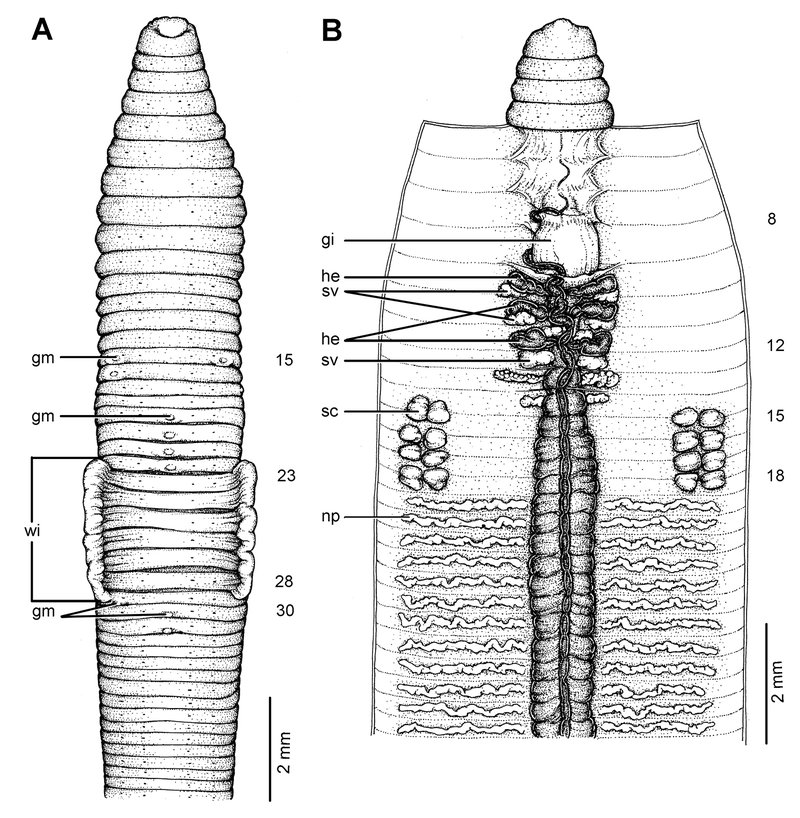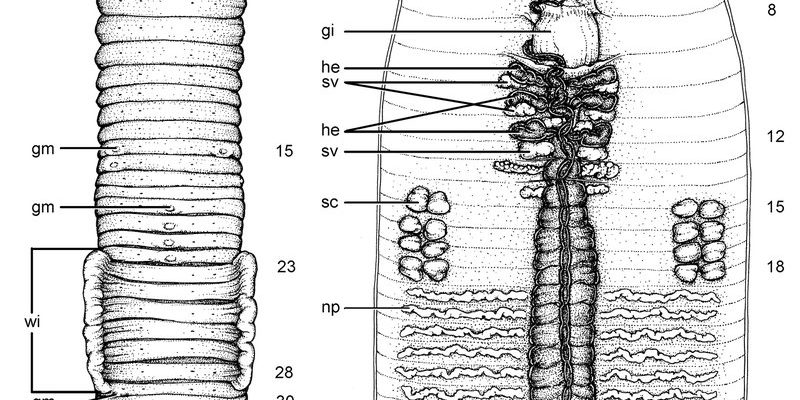
Picture them as the unsung heroes of the underwater world. Just as bees pollinate flowers, oligochaetes contribute to nutrient cycling in aquatic ecosystems. They break down organic matter, making it easier for other organisms to thrive. Understanding their range and distribution can shed light on broader ecological patterns and help scientists monitor the health of water bodies worldwide. Let’s dig a little deeper into their fascinating world.
What Are Freshwater Oligochaetes?
Freshwater oligochaetes are a class of segmented worms that live in various freshwater environments, from lakes and rivers to swamps and marshes. They belong to the phylum Annelida, which includes earthworms and leeches. These worms have soft bodies, a distinct head, and a simple digestive system.
You might be wondering why they’re called “oligochaetes.” The term comes from Greek roots, meaning “few bristles.” Unlike their marine cousins, these worms often have fewer hair-like structures, called setae, that help them navigate through the sediment. They come in many shapes and sizes, with some measuring only a few millimeters long while others reach up to several centimeters.
Their primary function in freshwater habitats is to decompose organic material. As they munch on decaying matter, they help recycle nutrients back into the ecosystem. This not only benefits the oligochaetes but also promotes the growth of plants and microorganisms, supporting the entire food web.
Global Distribution of Freshwater Oligochaetes
Freshwater oligochaetes can be found in a variety of habitats all over the globe. They thrive in clean and slightly polluted waters, making them excellent bioindicators. Some regions have a diverse mix of species, while others may have only a handful.
In general, you can find them almost everywhere—North America, Europe, Asia, and even Australia. Their specific distribution often depends on environmental factors like temperature, pH, and availability of food sources. For instance, warmer climates usually support a larger diversity of oligochaetes.
Interestingly, some species are more tolerant of pollution than others. This means that monitoring which oligochaetes are present in a water body can help researchers assess water quality. If you notice more pollution-tolerant species, it might be a sign that the ecosystem is stressed and needs attention.
Habitat Preferences of Freshwater Oligochaetes
So, where do oligochaetes like to hang out? Generally, they prefer sediment-rich environments, where they can burrow and find plenty of food. This includes sandy and muddy bottoms in lakes, rivers, and wetlands.
Here’s the thing: they’re not picky eaters. These worms feed on decomposing plant material, algae, and microorganisms. In some cases, they even help aerate the soil by tunneling through it, allowing water and nutrients to penetrate deeper. This is crucial for the health of aquatic plants and contributes to the overall productivity of the habitat.
You might find oligochaetes at varying depths, depending on their species. Some prefer shallow areas, while others have adapted to deeper waters. Their ability to thrive in different environmental conditions showcases their resilience and adaptability, making them essential components of freshwater ecosystems.
Species Diversity and Identification
The diversity of freshwater oligochaetes is surprisingly large. Over 450 species have been documented worldwide, each with unique characteristics. Some of the more common genera include *Lumbriculus*, *Tubifex*, and *Monopylephorus*.
Identifying these worms can be tricky, especially for beginners. They often look quite similar at first glance, but a closer inspection reveals differences in body shape, size, and color. For instance, *Lumbriculus* tends to be more slender and often has a darker hue, while *Tubifex* has a more robust build and is usually found in sediment-rich areas.
To help with identification, researchers often look at various traits, including:
- Body segments: The number of segments can vary between species.
- Coloration: Color can be a key identifying feature.
- Habitat: Knowing where they live can narrow down the species.
If you’re interested in exploring this further, field guides specific to oligochaetes can be a great resource. They provide detailed descriptions and images to help you identify species you might encounter.
The Role of Freshwater Oligochaetes in Ecosystems
Freshwater oligochaetes serve several important functions in their ecosystems. One major role is their contribution to the breakdown of organic matter. As these worms consume detritus, they help recycle nutrients, promoting healthy water quality and plant growth.
They also serve as food for various aquatic creatures, including fish and amphibians. By providing a food source, oligochaetes help sustain higher trophic levels, which contributes to biodiversity. In fact, many fish species rely on oligochaetes during their juvenile stages, making them crucial for the survival of many aquatic species.
Let’s not forget their role in sediment mixing. When oligochaetes burrow, they disturb sediments, allowing oxygen to penetrate deeper into the substrate. This process is essential for aerobic microbial activity, which further supports nutrient cycling and maintains balanced ecosystem dynamics.
Conservation and Threats to Freshwater Oligochaetes
Despite their importance, freshwater oligochaetes face several threats, primarily related to human activities. Pollution from agricultural runoff, industrial waste, and urban development can significantly disturb their habitats.
You might be wondering how pollution affects them. High levels of nutrients and toxins can lead to reduced diversity and populations. Some species may thrive in polluted environments, but many are sensitive to changes in water quality. As a result, monitoring oligochaete populations can serve as a warning sign for larger environmental issues.
Habitat destruction is another significant concern. Wetlands, rivers, and lakes are often drained or altered for development. As these habitats disappear, so do the oligochaete populations that depend on them. Conservation efforts are crucial to maintaining the delicate balance of these ecosystems and ensuring that oligochaetes and other freshwater organisms can continue to thrive.
Research and Future Directions
Scientists are continually studying freshwater oligochaetes to gain a better understanding of their roles in ecosystems and their responses to environmental changes. Ongoing research focuses on mapping their global distribution and identifying new species, which can help refine bioindication methods for water quality assessment.
With climate change and habitat degradation posing increasing threats, understanding how oligochaetes adapt or respond to these changes is vital. Researchers are using advanced techniques, including genetic studies, to uncover the full diversity and resilience of these organisms.
In the future, we can expect to see more targeted conservation efforts aimed at preserving not just oligochaetes but the ecosystems they inhabit. By recognizing their importance, we can work towards healthier freshwater environments for all aquatic life.
In conclusion, while freshwater oligochaetes may be small and often overlooked, their role in the ecosystem is monumental. From nutrient cycling to serving as food for other wildlife, these tiny worms are essential for maintaining the balance in freshwater habitats. By understanding their range and distribution, we can appreciate the complexity of aquatic ecosystems and the importance of protecting them for future generations.

